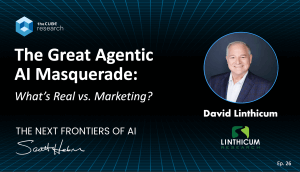This year’s Google Cloud Next 2025 has already delivered a wave of innovation for application development and modernization teams, and it’s just the first day. From the core infrastructure that powers AI to the application lifecycle tools that shape developer experiences, the announcements so far showcase Google Cloud’s commitment to making AI-powered software development not just accessible, but transformative.
At the heart of this transformation is the evolution of Kubernetes and Google Kubernetes Engine (GKE) as a foundational layer for scalable, performant AI workloads. Simultaneously, Google is radically simplifying the developer journey with new AI-powered experiences in Firebase, Gemini Code Assist, and a comprehensive shift toward an application-centric cloud.
Read more of our coverage here.
From Container Orchestration to AI Supercomputing
In a move that reinforces Kubernetes’ pivotal role in modern AI infrastructure, Google announced significant upgrades to GKE. The global AI infrastructure market is projected to surpass $200 billion by 2028, and organizations are racing to build distributed, intelligent applications that scale. GKE is no longer just for microservices—it’s the backbone for high-performance AI inference and training.
One of the most notable updates is the general availability of Cluster Director for GKE, formerly known as Hypercompute Cluster. This service allows platform teams to treat large clusters of GPU/TPU-accelerated VMs as a single orchestrated unit. As enterprise AI models balloon in size, this functionality provides the resiliency and compute density needed to deliver next-gen performance at scale.
GKE also launched Inference Quickstart and Inference Gateway—tools that simplify infrastructure configuration and intelligent load balancing for inference. These services solve critical pain points like overprovisioning and tail latency. In fact, Google reports up to a 60% reduction in tail latency and 30% lower serving costs using Inference Gateway.
This level of infrastructure advancement is why leading AI-native organizations like Meta, Spotify, and NVIDIA continue to rely on Kubernetes as their AI runtime. The work Google is doing alongside the open-source community—including collaborations with Intel, Red Hat, and Apple—underscores Kubernetes’ central role in the AI developer stack.
Abstracting Infrastructure, Amplifying Innovation
But infrastructure alone isn’t enough. In my conversations with enterprise teams, one consistent theme has emerged: developers need higher-level abstractions to work effectively with AI and distributed systems. Google’s new application-centric cloud experience is a direct response to that demand.
The launch of Application Design Center and Cloud Hub marks a paradigm shift. Instead of managing resources and services individually, developers can now design entire applications via a canvas-style interface, generate infrastructure-as-code, and monitor applications through unified dashboards. This is especially important as organizations move toward platform engineering approaches that emphasize self-service, guardrails, and productivity.
Equally impactful is Gemini Cloud Assist, which brings AI into every phase of the cloud application lifecycle—from design and deployment to observability and cost optimization. New features like Investigations, which analyzes logs and events to identify root causes, and Cost Explorer, which links utilization to spend, empower teams to optimize both performance and budget. The use of Gemini in these workflows is claimed to have already saved Google Cloud customers over 100,000 FinOps hours in the last year.
The Rise of Agentic Development
Perhaps the most developer-focused announcement came with the launch of Firebase Studio, a new integrated development environment for building AI-powered, full-stack applications. Powered by Gemini and tightly integrated with Firebase services, it offers over 60 pre-built templates, real-time prototyping, and production deployment in one seamless interface.
For developers overwhelmed by AI complexity, Firebase Studio acts as a bridge—offering assistance in design, coding, testing, and deployment without requiring deep AI or DevOps expertise. The platform is agentic by design, enabling users to invoke tools like the App Prototyping agent, AI Testing agent, and Code Documentation agent to accelerate delivery and reduce toil.
And this shift is gaining traction. According to our research at theCUBE, 74% of organizations expect their developers to integrate AI services into new applications within the next 12 months. Platforms like Firebase Studio meet developers where they are and empower them to build what’s next.
Meanwhile, Gemini Code Assist has evolved into a full-featured AI companion, now capable of writing code, migrating applications, reviewing pull requests, and generating documentation. With agents available across Android Studio, VS Code, JetBrains, and more, developers can access Gemini in the environments they use every day.
One impressive stat: CME Group reports that Gemini Code Assist is delivering over 10.5 hours of productivity gain per developer per month. That’s a meaningful reduction in cycle time, particularly in high-compliance or time-sensitive environments.
Developer Ecosystem, Open Source, and Flexibility
Google is also investing in the openness and interoperability of its tools. For example, Firebase now supports Python and Go in Genkit, its AI orchestration framework, alongside integrations with third-party models like Llama, Mistral, and Ollama. The inclusion of Vertex AI within Firebase offers developers secure, enterprise-grade access to generative AI, including the new Gemini 2.0 Multimodal Live API for conversational apps.
Meanwhile, Firebase Data Connect and App Hosting simplify full-stack development with GraphQL APIs, type-safe SDKs, and opinionated, Git-based CI/CD pipelines.
What’s most important is that Google isn’t forcing a single path. Whether you’re a backend engineer deploying to GKE or a frontend developer working in Firebase Studio, the tools are flexible, AI-powered, and deeply integrated with the broader cloud ecosystem.
Final Thoughts: GKE, Gemini, and the Road Ahead
The announcements thus far at Google Cloud Next 2025 reflect a mature understanding of developer needs in the age of AI. As organizations shift toward hybrid AI applications—where microservices, data pipelines, and foundation models coexist—the need for platforms that support this complexity without slowing down innovation becomes critical.
At theCUBE Research, we see this moment as an inflection point. Our recent surveys show that 63% of organizations cite developer productivity as a key bottleneck in AI adoption. Google’s approach—empowering teams with tools they already know, abstracting complexity, and injecting AI where it provides real value—directly addresses that challenge.
In summary:
- Kubernetes is no longer just infrastructure—it’s the foundation of AI workloads.
- AI-native development environments like Firebase Studio are reducing the barriers to building intelligent applications.
- Gemini is more than a model—it’s an AI partner integrated across the entire development lifecycle.
- Application-centric management is the future of cloud operations.
For platform teams, developers, and IT leaders, the message is clear: you don’t need to start from scratch. If you’ve built on Kubernetes, if you use Firebase, if you’re invested in Google Cloud—you already have your AI superpowers. Now is the time to unlock them.



